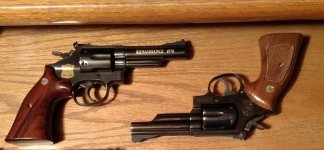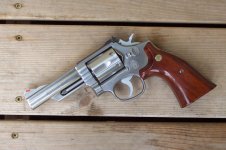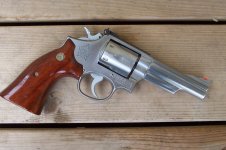Lightfoot30
Member
#1) Supposedly the 19-4 was the last model 19 with the Pinned Barrel & Recessed Cylinder.
When these (pre 19-5) guns are advertised for sale, the ads almost always brag about the "Pinned Barrel & Recessed Cylinders".
What's the big deal about these features, or is it just because that was the last model 19 to have them?
#2) It's always been my understanding that all pre 19-4 models of the MODEL 19, have had a problem with the "Top Strap" above the barrel tending to break or crack at its front end if firing a steady diet of 357 Magnum.
I always see it being recommended that Pre model 19-4's use 38 sp for normal target, practice & plinking, so as to not over stress this top strap weakness problem.
Supposedly, this problem was solved with the introduction of models 19-4 and later.
So, here's my question: Why then do I always see Pre 19-4 models selling for a considerably higher price at places like GunBroker?
Is it simply due to an older, and possibly more rare gun? Or, is it simply that the seller doesn't advertise this defect, and the buyer doesn't know any better?
When these (pre 19-5) guns are advertised for sale, the ads almost always brag about the "Pinned Barrel & Recessed Cylinders".
What's the big deal about these features, or is it just because that was the last model 19 to have them?
#2) It's always been my understanding that all pre 19-4 models of the MODEL 19, have had a problem with the "Top Strap" above the barrel tending to break or crack at its front end if firing a steady diet of 357 Magnum.
I always see it being recommended that Pre model 19-4's use 38 sp for normal target, practice & plinking, so as to not over stress this top strap weakness problem.
Supposedly, this problem was solved with the introduction of models 19-4 and later.
So, here's my question: Why then do I always see Pre 19-4 models selling for a considerably higher price at places like GunBroker?
Is it simply due to an older, and possibly more rare gun? Or, is it simply that the seller doesn't advertise this defect, and the buyer doesn't know any better?





